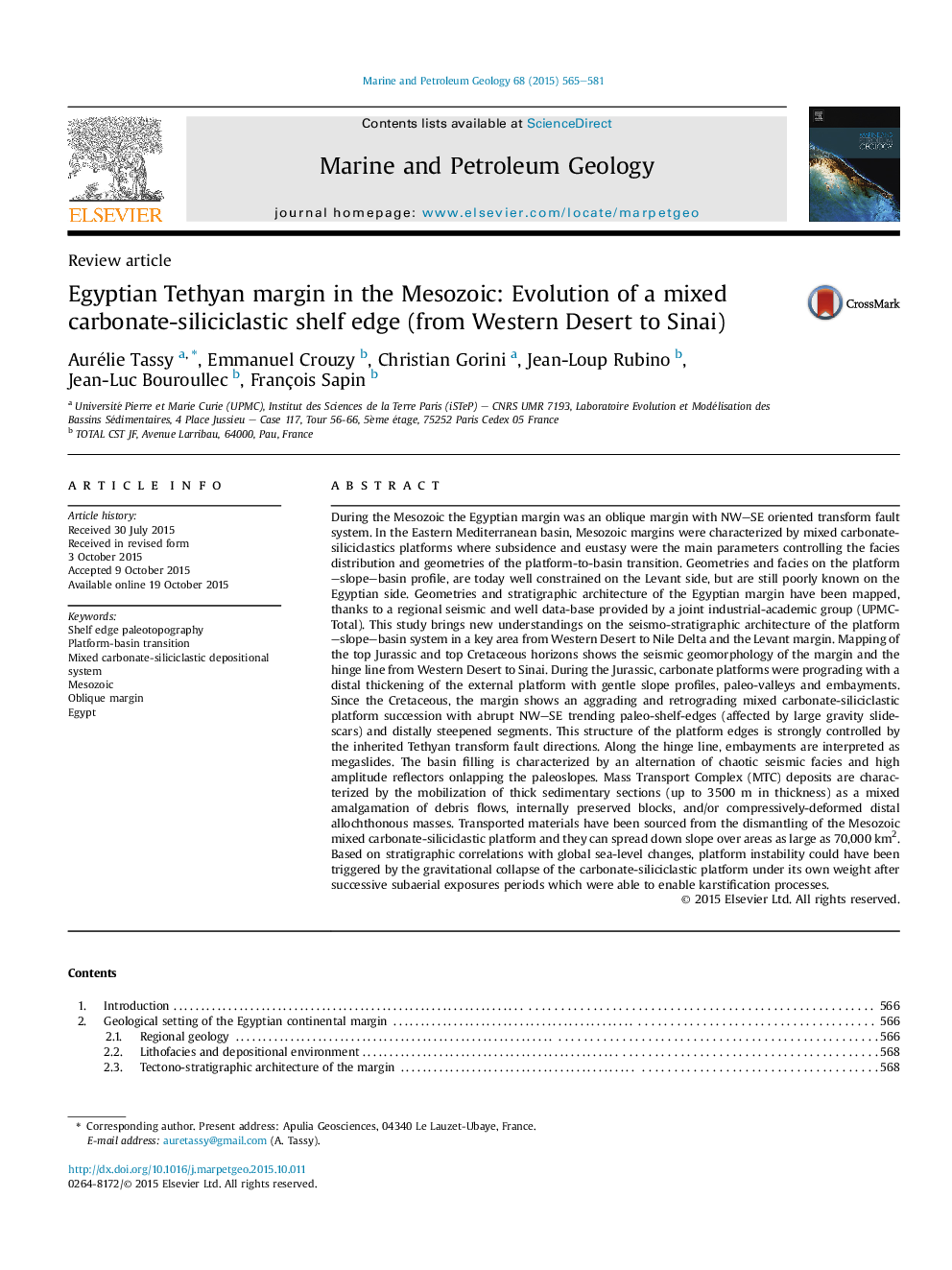| Article ID | Journal | Published Year | Pages | File Type |
|---|---|---|---|---|
| 6435123 | Marine and Petroleum Geology | 2015 | 17 Pages |
â¢Onshore-offshore seismic interpretation allowed mapping of the Jurassic and Cretaceous Egyptian platform margin.â¢Seismic geomorphology of the margin and the hinge line from Western Desert to Sinai is revealed.â¢Jurassic carbonate platform was mainly prograding and showed gentle slope profiles with punctual sedimentary transfer axis.â¢Cretaceous platform margin showed different slope profiles: subvertical scarps and distally steepened segments.â¢Mass Transport Complex deposits sourced by the dismantling of the Mesozic platform are located on the slope and basin.
During the Mesozoic the Egyptian margin was an oblique margin with NW-SE oriented transform fault system. In the Eastern Mediterranean basin, Mesozoic margins were characterized by mixed carbonate-siliciclastics platforms where subsidence and eustasy were the main parameters controlling the facies distribution and geometries of the platform-to-basin transition. Geometries and facies on the platform-slope-basin profile, are today well constrained on the Levant side, but are still poorly known on the Egyptian side. Geometries and stratigraphic architecture of the Egyptian margin have been mapped, thanks to a regional seismic and well data-base provided by a joint industrial-academic group (UPMC-Total). This study brings new understandings on the seismo-stratigraphic architecture of the platform-slope-basin system in a key area from Western Desert to Nile Delta and the Levant margin. Mapping of the top Jurassic and top Cretaceous horizons shows the seismic geomorphology of the margin and the hinge line from Western Desert to Sinai. During the Jurassic, carbonate platforms were prograding with a distal thickening of the external platform with gentle slope profiles, paleo-valleys and embayments. Since the Cretaceous, the margin shows an aggrading and retrograding mixed carbonate-siliciclastic platform succession with abrupt NW-SE trending paleo-shelf-edges (affected by large gravity slide-scars) and distally steepened segments. This structure of the platform edges is strongly controlled by the inherited Tethyan transform fault directions. Along the hinge line, embayments are interpreted as megaslides. The basin filling is characterized by an alternation of chaotic seismic facies and high amplitude reflectors onlapping the paleoslopes. Mass Transport Complex (MTC) deposits are characterized by the mobilization of thick sedimentary sections (up to 3500Â m in thickness) as a mixed amalgamation of debris flows, internally preserved blocks, and/or compressively-deformed distal allochthonous masses. Transported materials have been sourced from the dismantling of the Mesozoic mixed carbonate-siliciclastic platform and they can spread down slope over areas as large as 70,000Â km2. Based on stratigraphic correlations with global sea-level changes, platform instability could have been triggered by the gravitational collapse of the carbonate-siliciclastic platform under its own weight after successive subaerial exposures periods which were able to enable karstification processes.
